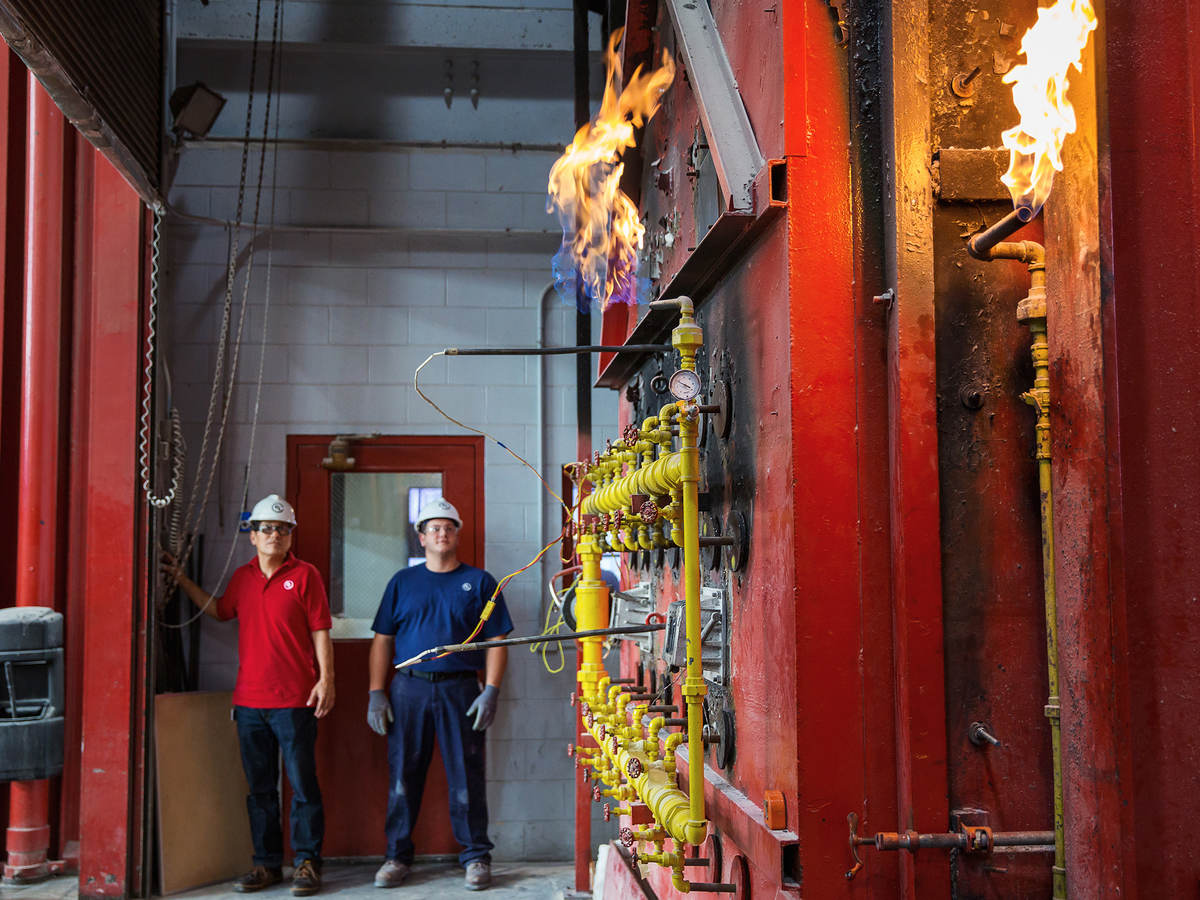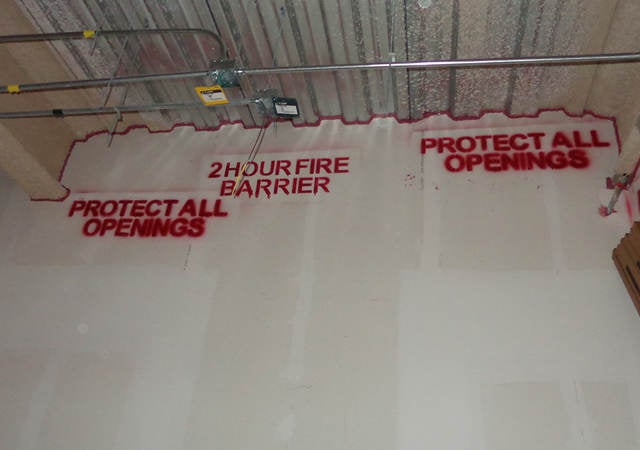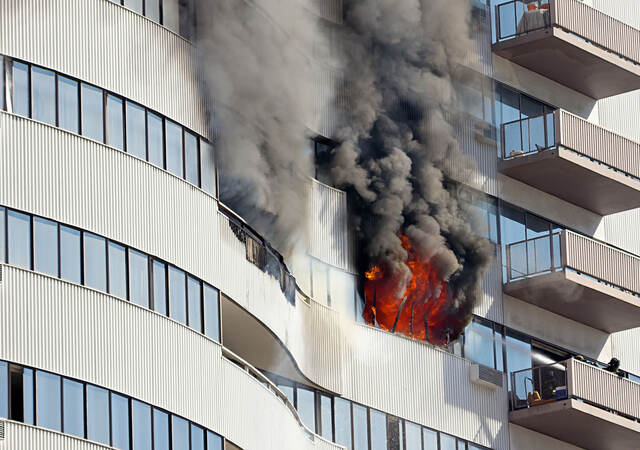In the second in a series of three articles (read the first one, here), Simon Ince of UL Solutions examines what must be done to get firestopping right in new buildings. He offers a step-by-step analysis of the processes that need to be in place and the people who need to verify that firestopping is fit for purpose.
The previous article introduced three basic but essential concepts:
- Highlighting the importance of fire protection (firestopping) from early in the project
- Verifying competence of those involved in firestopping
- Getting an accurate and detailed digital record of firestopping
Here, we will expand on all three of those areas: suggesting the steps that could be taken to get firestopping right in new buildings, whilst also aligning with the proposed new Building Safety Regulations and other current work around competence in the sector.
A different ending requires a different start
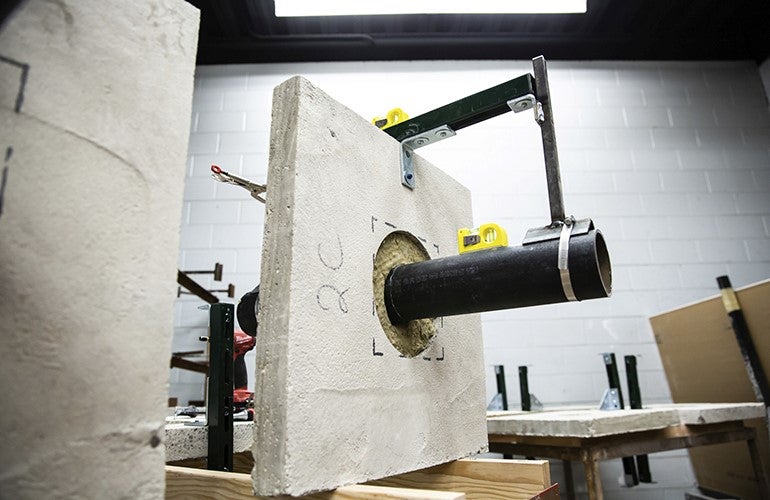 There are undoubtedly some improvements that can be made when it comes to the practice of firestopping in buildings. Evidence of poor firestopping backs up Dame Judith Hackitt’s observations that the overall system does far too little to ensure that fire protection does what it needs to do in a real fire situation. If firestopping is missing or poorly installed, compartmentation failure can happen very quickly, involving areas outside the compartment of fire origin and increasing the fire damage suffered.
There are undoubtedly some improvements that can be made when it comes to the practice of firestopping in buildings. Evidence of poor firestopping backs up Dame Judith Hackitt’s observations that the overall system does far too little to ensure that fire protection does what it needs to do in a real fire situation. If firestopping is missing or poorly installed, compartmentation failure can happen very quickly, involving areas outside the compartment of fire origin and increasing the fire damage suffered.
As we all understand, lives can tragically be taken when a significant failure occurs. Recent fires involving significant spread of fire in residential buildings highlight the impact fires can have for those who live in multi-occupied residential dwellings. Both of these incidents displaced many residents, destroying their homes and personal belongings, through a fire that started elsewhere in the building and quickly spread. To give a building resilience against fire, firestopping plays a very important role. It must be installed correctly to contain fire spread.
Step 1: Plan firestopping at the right time
Depending on the scale of the new build project, it is unlikely that fire protection (firestopping) will be on the agenda in Royal Institute of British Architecture (RIBA) plan of works Stages 0 and 1 in the project briefing stage. Therefore, Stage 2 is often the first opportunity to start conversations regarding fire protection.
That conversation requires collaboration and a positive attitude towards delivering fire safety. The client for the build project is responsible for assembling a team of consultants and contractors; these all need to have the correct attitude towards the functional requirements and project outcomes to deliver a fire safe building. Without making fire safety a priority as part of the planning and development stages, the likelihood increases that the requirements of installed fire safety will be overlooked during the construction phase. Therefore, the selection of the design team sets the tone for the project and the client can and should dictate the culture of that team.
The so-called drive to the bottom can be attributed to placing price above quality in the project brief. This must change if the desired improvements in construction are to be made.
The architect, and structural and building services engineers, with support from other specialist consultants such as fire engineers, have traditionally been the core of the design team and are tasked to deliver to a specification including fire safety. Engineering methods to provide a cost-effective solution for the client may also minimise resilience against fire. Ask any good design team to add in a higher degree of fire resilience and they will; however, that could impact on the budget. Unless that design brief is supported by diligence in the construction phase, it could be a wasted attempt to improve performance against fire.
Step 2: Engage the right people
The three Cs (competence, cooperation and coordination) must be displayed by the design team. As mentioned in step one, the client’s appointed design team have a collective duty to deliver the functional requirements for the project. They must be competent, having the skills, attitude, knowledge and experience (SAKE) required to collectively design a safe building.
 Currently, only functional life safety requirements need to be met. The proposed Gateway system in the new Building Safety Regulations will ensure design submissions are appropriate for functional life safety purposes, in all buildings that fall in scope of the proposed new regulations. Gateway One has to be completed before planning permission can be granted, with a fire statement for the building provided with the planning application.
Currently, only functional life safety requirements need to be met. The proposed Gateway system in the new Building Safety Regulations will ensure design submissions are appropriate for functional life safety purposes, in all buildings that fall in scope of the proposed new regulations. Gateway One has to be completed before planning permission can be granted, with a fire statement for the building provided with the planning application.
A competent and committed design team with a fire safety focus should be more likely to submit design details that pass planning approval, with very few or no issues at all. The design team must all take due regard of the fire strategy document and fire strategy plans for the building. These documents underpin the fire safety principles applied to the building and set out the specific design features that protect life within those buildings. A competent fire engineer or team will provide a narrative for what must be in place to keep the occupants of a building safe, and this will be supported by annotated fire plans.
If the fire engineer is not retained for the entire project, there can be subsequent variations from the original that might compromise the fire strategy and functional requirements. In particular, problems may arise where the mechanical, electrical and plumbing (MEP) engineers plan their systems without consultation with the fire engineer and do not meet the essential fire performance requirements. The sooner the MEP design identifies all the services and their specific types, the more the building design can be made to accommodate service openings that will allow for ease of installation. Crucially, it will help with the ease of firestopping due to the pre-formed and appropriate service openings.
Early planning and preparation can help prevent many onsite alterations and thus unplanned openings created where they should not be. Unplanned openings are a major contributor to onsite difficulties for firestopping and this often creates a need to amend as designed details.
By keeping the fire engineer in the project team past the design stage, they may be consulted if onsite design issues occur during the construction process. It will also allow the MEP engineer to consult on firestopping as part of their overall plan for installation. Ultimately as a duty holder, the principal designer will need to ensure the design team have satisfied all functional requirements in the concept and developed design phases.
Step 3: A strong submission
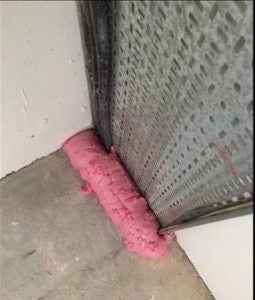
For RIBA Stage 4 technical design phase leading up to proposed Gateway Two, a full submission of detailed plans to the Building Safety Regulator is required. These must have sufficient detail to demonstrate how building regulations are being met and how the building safety risks are being managed. Because firestopping has been part of the process for Stages 2 and 3, the technical design of firestopping should continue to flow through this phase.
Within the proposed new regulatory system, this phase will need to be fully detailed for submission to the new Building Safety Regulator. Failure to supply sufficient information at this point could prevent the project from being approved for the construction phase. The regulator will need to be satisfied that it meets the necessary requirements to proceed to the next development stage, otherwise they will seek further information from the Client or reject an application outright. This potential hard stop should promote evidenced firestopping design plans.
The regulator will also set the inspection regime at an appropriate level for the scheme; meaning that fire protection will be inspected as part of the regulators’ confirmation of compliance. In addition, the Change Control strategy, submitted at the application stage, will need to demonstrate that the firestopping design will be carried out as described and that if any changes occur, they will be controlled, evidenced and recorded.
A good design will have considered all aspects of the services to be firestopped within the building, through a wall or floor. These include:
- whether the sealing will be loadbearing or subject to movement
- required fire resistance period
- insulation and water penetration requirements
- size of opening the service pass through
- compatibility issues with the service and the firestopping system
The Association of Specialist Fire Protection (ASFP) Red Book is a well-respected source for considerations relating to the process of firestop design.
During this critical design phase, it’s important to consider the full, detailed specification of proposed firestopping products. Once it has been established where the services will run, what the services are and what they are made from, through what substrate they will pass, and what fire resisting and insulation and other performance requirements there are, the designer can start to plan what products will be required and which are appropriate to firestop the service penetration.
It’s important not to mix manufacturers’ products to form a complete system. Use the same manufacturers’ products for firestopping; as they were tested. Select products with the best evidence of performance. Third-party certificated products should be used whenever possible to verify that the products are manufactured under a quality process and the scope of the products is independently checked. The scope of certification should be checked by a competent designer to ensure the product is fit for the site application and copies of the certification documentation should be retained. A manufacturer’s technical sheet without certification, CE marking or primary test evidence should not be sufficient for a product to be specified. It is also important to understand the fire test standard to which the product/system was tested.
Specification of workmanship and installation competence benchmarks should be included within the specification. The use of third-party certificated firestopping contractors offers assurance of competence (to be discussed more in the third article).
Procurement of products is another area which can affect performance onsite. The control of this process can vary significantly, with product substitution too common, so having a change control strategy in place can prevent incorrect products being substituted. If products are substituted for other reasons such as availability of the specified product or system, then this will also have to be justified and recorded.
Step 4: Avoiding onsite design liability
Conducting the design stage with a cohesive approach in RIBA Stage 4 reduces the risk of onsite design and install and associated design liability risks. Design work should not be conducted during RIBA Stage 5. Variations onsite should be obvious due to visibility of the detailed and agreed design for the firestopping. This would then trigger the processes outlined in the Change Control strategy to verify that any change is evidenced as being fit for purpose. Third party certification, CE marking and primary test evidence for any proposed alternative firestopping solution should be provided. Where this doesn’t exist, the main contractor must seek further suitable advice, as there may be a need for an expert technical assessment of the suggested solution.
Assessments should never replace certification/test evidence but if they are carried out in accordance with industry guidance they should offer good assurance of required performance in a real fire situation. However, all changes need to have supporting evidence; this stops the design/build process from happening ‘on the hoof’ and records the accountable person who made changes and why they made them.
Step 5: Firestopping quality control
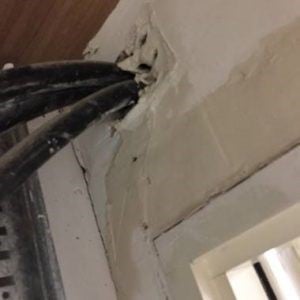
Depending on the size of the project it might be appropriate to have mock-ups of the identified firestopping solutions as designed and specified. Providing a controlled example of how each of the firestops should be installed, with clear instructions and product references, will allow for quality assurance inspection by the installation team and any other quality/regulatory audits. These sample benchmarks should be signed off by the collaborative design team.
Step 6: Work control
Work control, sequencing and quality control are very important in getting firestopping correct. Many simultaneous jobs are occurring on a building site and unless these are sequenced correctly there is a real danger of existing firestop being compromised by installing additional services, or through water damage if the property is not weather tight, or of new services being added through compartment walls without appropriate firestopping.
A competent specialist contractor should be used for firestopping work. The use of unskilled labour to complete firestopping work has undoubtedly led to issues with poorly installed firestop in many existing buildings. It is a skilled job and not one to be given to a general labourer or regarded as something the plumber or electrician can do as they run pipe or cable. Using contractors who have a current certificate from an independent UKAS accredited certification body offers the best level of assurance that the company has competent/skilled employees, and that they operate with a quality assurance management system. The scope of the work should be checked and the certification scheme requirements should also be examined to ensure the process of certification is robust.
The use of subcontractor installers by the certificated company should not be accepted without clear evidence that the subcontractor can be included in the certification for the parent company.
Each firestopping job should be identified at the design stage and therefore a unique reference number should be generated to identify the specific penetration, its location and what design firestop should be used. The competent contractor should confirm the penetration matches the description. They should take photographs before, during and after as evidence of the work completed. The materials used should be matched against the specification and checked that the penetration is as described in the technical design. All manufacturer’s instructions and the certification/CE/test supporting evidence should be available to the contractor and they should have been checked against the specification prior to installation.
A competent certificated installer will label each penetration and record the details about the date it was completed, and which installer did the work. That, combined with a final photo of the completed firestop, offers confirmation of the job completion.
Step 7: Quality checks
Regardless of the confirmation by the competent contractor that the job has been done correctly, it must be checked. Quality control checks underpin most other aspects of our life, from consumer goods to pharmaceuticals, that helps ensure what is made is fit for purpose.
The certificated contractor themselves will have a system of supervisory checks of the work their installers have done. The format and depth of that inspection should be transparent and sufficient for the size and complexity of the site. The ASFP TGD 17: Code of practice for the installation & inspection of fire stopping systems in buildings offers a suggested matrix of inspections.
In addition to the contractor’s internal quality checks, it is recommended that a third-party quality check is done. A reliance on building control inspection is not sufficient for this purpose. The use of an independent passive fire protection inspection body may be appropriate, or the use of a technical expert from within the principle contractor organisation. The use of destructive testing of a sample of the installed fire stopping systems should be considered, as appropriate for the complexity of the site.
The Steering Group on Competence for Building a Safer Future recommends that a new role of Independent Construction Assessor (ICA) be put in place. The ICA appointed by the client will be responsible for the independent assurance of the construction, thus confirming that it matches the design brief. They are, effectively, a competent clerk of works whose job is to make sure the client gets quality work across the project.
The implementation of quality checks as work is done will demonstrate that firestopping covered up in the final stages of a build is verified and accepted by the principal contractor and by the client.
Step 8: Handover
Once the project is complete the client, under the new Building Safety Regulations, will be required to provide the key data set of information to the Building Safety Regulator, along with updated as built plans which reflect any agreed changes from the Gateway Two submission. These will include details of any changes made under the change control strategy that have been implemented during the construction phase, plus a final version of the fire and emergency file. Gateway Three has to be passed before occupation can commence and the Building Safety Regulator will be able to refuse a licence to occupy the building if the submission of information isn’t sufficient.
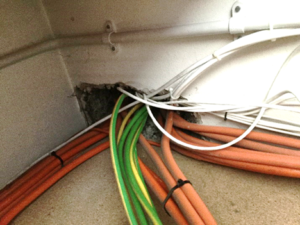
At this stage, the client, principal designer and principal contractor will also be required to sign a final declaration confirming that they believe the building complies with building regulations.
The building safety regulator will make judgement as to whether the provided information offers sufficient evidence that the building complies with all requirements for occupation.
Key information related to fire and structural safety submitted during the three Gateways will form part of the golden thread of information. This will include the Regulation 38 information that is needed throughout the lifecycle of the building.
All of the above will most likely be in an electronic format for ease of submission. To accompany those records, the principal contractor should issue electronic versions of the operating and maintenance manuals for the firestopping, plus original manufacturer’s literature, certification/CE or primary test evidence in support of the ongoing management requirements of the new building operator/accountable person. These are required for details of inspection and maintenance requirements, but more importantly for firestopping the life expectancy for the firestop system.
They should also include firestopping details, photographs/records of the completed firestopping, quality check records, both contractor and any third-party checks, and plans of where the firestopping is installed. Along with the fire-strategy plans, there should be specified performance requirements, for example for a fire door set – FD30s.
Having quality information in a useable format will allow the building safety manager appointed by the accountable person to plan and resource their ongoing management system properly.
Step 9: Management in occupation
Armed with all relevant information, a competent building safety manager should be in a position to arrange for routine maintenance, inspection and replacement of firestopping if required. In addition, they will have key information relating to existing service routes and the firestopping in place at compartment walls and floors, enabling them to manage any work to the building that may compromise existing firestopping.
If, for example, a penetration seal is damaged and needs replacing, they will be able to trace the original specification design, identify the original manufacturer and installer and pull up the third-party certification for the system. Assuming the original products are still available, it should be a relatively simple process for an appointed competent firestopping contractor to replace the damaged system with an identical replacement firestop.
Working Group 8 of the Competence Steering Group has identified that the building safety manager needs a comprehensive skill set and that competence is critical for safe ongoing management of a buildings safety systems. They have proposed a new term for this person – the building safety coordinator – which reflects the need for them to manage a multitude of supporting competent duty holders, such as fire risk assessors or fire door inspectors.
As the building moves through its life cycle, it is likely that it will undergo refurbishment or even change its ownership. Access to all the original documentation will be invaluable for any planned improvements. For any new owners, having all the information transferred in one package will facilitate the smooth transfer of management responsibilities.
Should the building undergo any refurbishment that requires building control the process of getting firestopping right would apply, and steps one to nine should once again be followed.
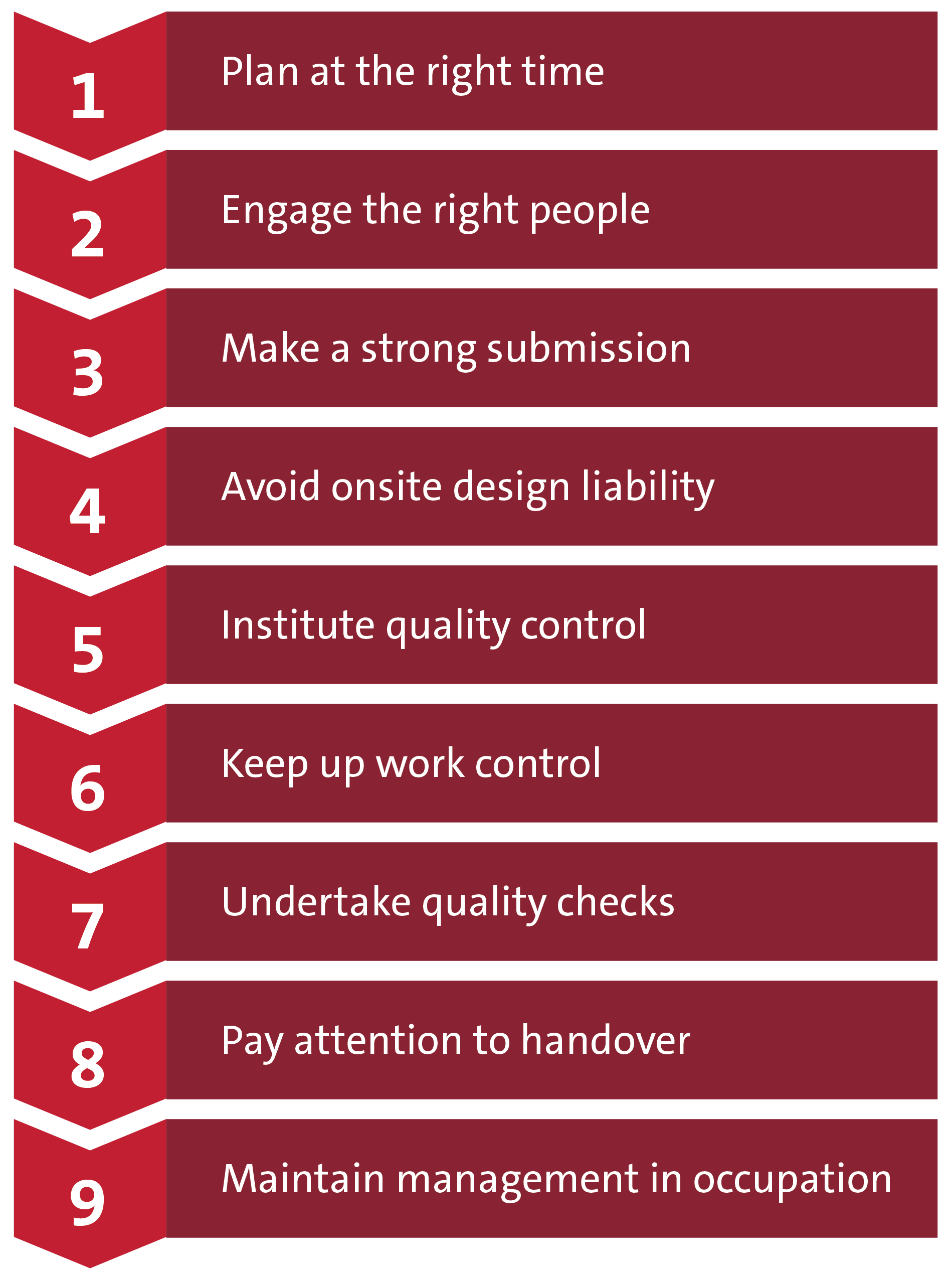
The Future of Firestopping and Fire Safety
This article examines the future of fire safety, firestopping and touches on the impact of the Hackitt Review and the new proposed building safety regulations.
Firestopping and Third Party Certification
This article discusses the value of independent third-party certification, illustrating how it can support improved fire safety standards.
Get in touch
Have questions, need specifics? Let's get this conversation started.

